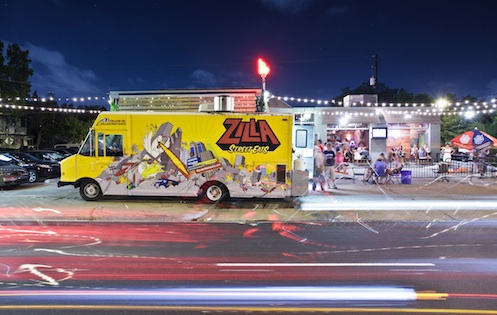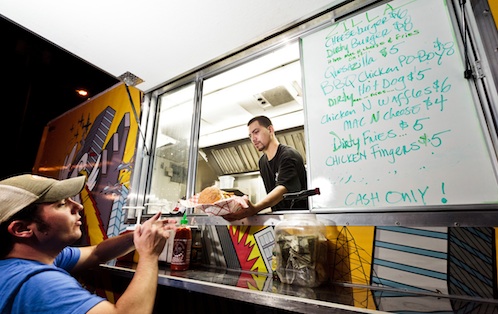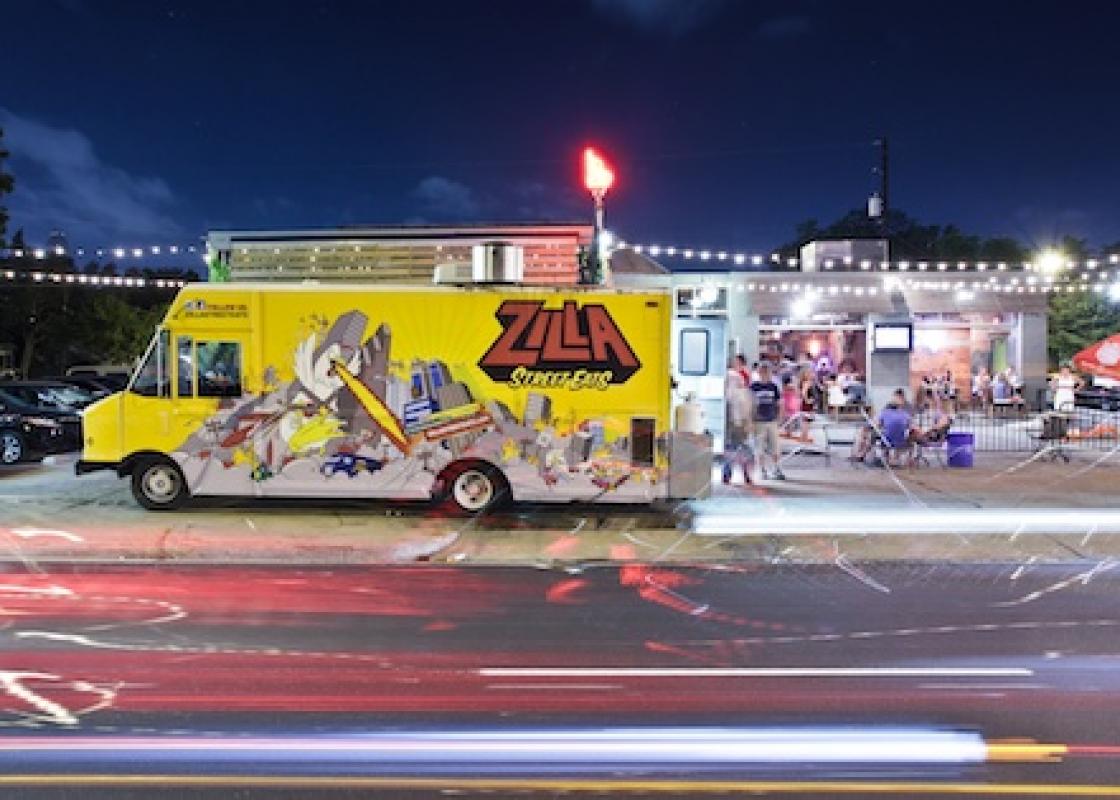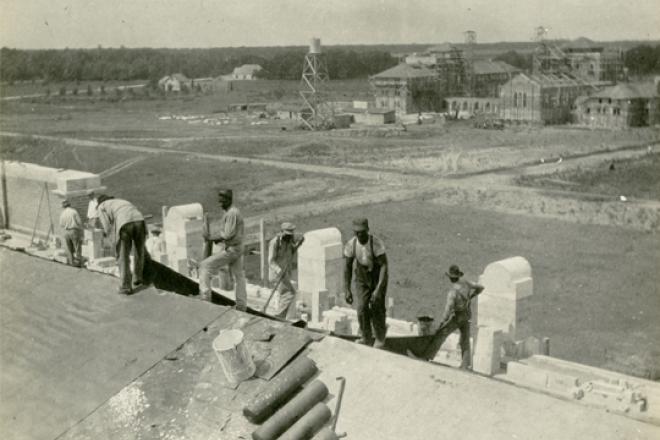
Jason Kerr’s Zilla Street Eats serves customers outside Liberty Station on Washington Avenue. Photos by Eric Hester
The Summer 2011 issue of Cite (86) included an article by acclaimed food critic and restaurateur Robb Walsh in support of allowing food trucks to operate more freely in Houston. He makes important points about the contributions that food trucks can make to urban life. Now the reforms are being debated before city council and we are making the piece available on OffCite.
Austin loves its food trucks, Dallas has banned them, and Houston can’t make up its mind. Some Houston food lovers keep track of their favorite food truck’s whereabouts via Twitter. And some Houston restaurant owners lie awake at night thinking up new ways to make life difficult for gypsy chefs. Whatever you think about them, food trucks represent the cutting edge of culinary entrepreneurship. It’s not just about the crepe or dosa or taco, but whether you drive 20 miles to get it or walk to the once empty parking lot down the street.
A food truck owner can get into business for around $50,000 and make money selling food at very low prices. That’s because they don’t have to provide restrooms, handicapped access, or get a certificate of occupancy. And for most food truck owner-operators there aren’t any employees or the payroll taxes, benefits, and regulations that come with them either. No wonder so many talented, young chefs and new immigrants have opted to buy a food truck instead of opening a restaurant.

Former Houston Press restaurant critic and journeyman chef Jason Kerr has a truck called Zilla Street Eats that moves around town following the opportunities. On Saturday mornings, Jason is cooking breakfast at the Urban Harvest Farmer’s Market on Richmond using ingredients from the vendors. You can get a breakfast taco made with Hatterman’s yard eggs and Grateful Bread’s maple-cured bacon. Some other nights you’ll find him in the parking lot of Liberty Station selling his famous “Garbage Burger,” a hearty half-pounder on a sesame bun topped with mac and cheese, among other things.
Food trucks are opportunistic—they serve customers at construction sites and parking lots. They set up outside bars late at night when restaurants aren’t open. No they aren’t “roach coaches.” They are regulated by the Health Department just like restaurants. They are required to sanitize the cooking area on a regular basis, and to visit a commissary to dump wastewater and grease and to fill up with potable water. Of course, there are dirty food trucks and clean food trucks—just as there are dirty restaurants and clean restaurants.
Building a restaurant inside the Loop is a daunting proposition, both from the economic and the practical perspective. You are probably undercapitalized if you haven’t got a couple of million dollars to spend; and then there are the regulations. Franz Kafka couldn’t have imagined a more elaborate labyrinth of permits, inspections, certificates, licenses, and bureaucratic hurdles. And the rents are astronomical.
People typically build restaurants where they can find inexpensive real estate. At the turn of the last century a culinary entrepreneur might open a restaurant or a corner food store on the ground floor of a two-story home. There were over a hundred “corner stores” in Galveston in the late 1800s. Raul Molina Jr. and his mom and dad lived on the second floor above the family’s first Tex-Mex restaurant on West Gray Street. Felix Tijerina lived in his first restaurant as well.
In the old development model, small restaurants helped fill in the urban landscape. Small eateries tended to spring up in inner-city ethnic neighborhoods, warehouse districts, and other pockets of affordability, making the city denser and more livable. But that’s not the case anymore. Now the cheap rents are in strip centers on the very edges of suburbia—which is why all our new mom-and-pop ethnic restaurants are so far from downtown.
James L. Peacock, a professor of anthropology at the University of North Carolina and the author of Grounded Globalism, gave a talk at this year’s Southern Foodways Alliance symposium. The subject was the Global South, and Peacock talked about the way immigration from Asia and Latin America was transfiguring North Carolina cities like Charlotte and Raleigh. A great many immigrants were opening ethnic restaurants, and in their search for the best deal on real estate, they were clustering together in the outermost suburbs. The slides in his Powerpoint presentation showing Vietnamese pho restaurants in the same shopping center with taquerías and Indian food outlets could have been shot in Houston. The problem with this business model is that while the cheap real estate may be on the outer edges of the urban area, the demand is in the more populated central areas.
Food trucks and food trailers solve the dilemma by putting the meals on wheels. They are the mobile homes of the restaurant world. They move around and make life more livable in the poorly served and empty spaces of inner-city Houston. But like the actual double-wides, they are frowned upon by the elite.
Houston’s city government is currently engaged in a debate about the enforcement of Health Department regulations on food trucks and trailers. Some city regulations, like the one banning food trucks from locating anywhere near a table, or providing picnic tables of their own, seem to be motivated by those restaurant owners who want to keep food trucks from becoming too successful. Meanwhile, the Texas Cottage Food Bill recently made it through an especially tortuous Texas legislature: it allows food truck owners to use their home kitchens to cook foods served on a truck.
It will be interesting to see which way Houston decides to go at this fork in the road.










